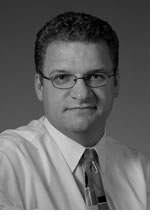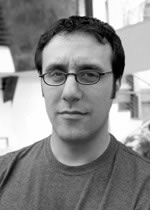

08/2005
AIArchitect asked members who participate in the One Percent Solutions’ program how they incorporate and encourage pro bono work in their firm. Here’s some of what they had to say:
 Roy Abernathy, AIA, president, Jova/Daniels/Busby, Atlanta
Roy Abernathy, AIA, president, Jova/Daniels/Busby, Atlanta
Our pro bono work is an important way to provide an outlet for our employees to grow professionally while giving back to the organizations they feel are important. We look for an employee to be an advocate for each project and, in most cases, the employee is already involved in the organization. The time commitment and level of the pro bono effort is dependent on the individual situation, but it is important to make sure that both sides have a vested interest in the success of the project. If there is anything I can advise other firms to consider is that many times the evaluation and incorporation of donated products and services can complicate a project well beyond the expected scope. Be careful to clearly define the roles and expectations for everyone involved.
 Bonnie Bridges, AIA, Bridges Architecture, San Francisco
Bonnie Bridges, AIA, Bridges Architecture, San Francisco
It doesn’t take a lot of encouragement. Even with just my partner and me, we find that our nonprofit clients are always some of the most appreciative of what we do. When we set aside this “one percent solution” money, we say, “we know you’re wanting to do this project down the road, we offer x-amount of dollars, and if you want us to help you out we can, and this is how far it will get you.” The client gets really inspired when they see you’re coming to the table offering them something. It’s a different kind of relationship. Besides the respect for the work that you do, there’s an honoring of the fact that you would be willing to donate it. The process becomes a lot of fun when you do those pro bono projects.
 Graham Greene, AIA, principal, Oglesby Greene Architects, Dallas
Graham Greene, AIA, principal, Oglesby Greene Architects, Dallas
We did it because our employees wanted to volunteer their time and we thought it would be better to organize it and incorporate it into our professional time. In essence, we’re compensating people to do pro bono work, so it’s the company making their contribution, as well. Our employee manual says, “The company encourages all employees to participate in public-service activities. Time spent away from the office during the normal business hours is to be entered on time sheets in the public service category. Examples of public service include AIA committee work, serving on boards, service to nonprofits, voting, and jury duty.” The public service is subject to a 100-hour maximum benefit—a lot more than 1 percent. We do encourage it within professional activities.
 Peter
F. Hapstak III, AIA, founding principal, CORE architecture + design,
Washington, D.C.
Peter
F. Hapstak III, AIA, founding principal, CORE architecture + design,
Washington, D.C.
CORE doesn’t have a set approach to pro bono work, per se, but we typically become aware of an opportunity or a cause through an existing client. Our response is based on the firm’s desire and gut instincts that drive the participation. Our goal is that we should be involved and respond with a common collective understanding that it’s the right thing to do. Next we see what we can contribute. If the goal seems to be too unrealistic based on extraneous conditions or there isn’t sufficient energy to do it right, we pass. Once we decide to proceed, it’s full commitment of energy, time, and resources. We’ve waived or adjusted fees for projects because they were just too cool to pass up. It’s often been for clients that were in over their head and are good people but under-funded or lost in the process. I’m not sure that this is technically pro bono, but it is from our firm’s income standpoint. More importantly, we always have our feelers out for projects that allow us to feel good about what we do and how a particular project will enhance CORE’s image. These types of projects typically allow our creativity to shine through. When you’ve given unselfishly, it makes you feel pretty good inside.
 Jennifer Lyon, Assoc. AIA, designer, Marks, Thomas and Associates, Baltimore
Jennifer Lyon, Assoc. AIA, designer, Marks, Thomas and Associates, Baltimore
We had heard about the One Percent Solution program and we’re involved in a lot of city work, so we wanted to take advantage of the opportunity. The project is 12 different libraries and there are 12 different architecture firms; each firm is working on one library. It’s a good opportunity for our name to be out in the public realm. It’s pretty well supported within the office, about 50–50 office time and personal time to work on the project. It is hard to ask people to come in on weekends to do something they’re not going to be paid for. One of my reasons is that I’m an intern and I need hours for IDP, and it’s also a good way to volunteer my services and my time. These are some of the benefits that I try to instill in the people who would be interested in working on it.
 Michael Pinto, AIA, principal, Osborn, Glendale, Calif.
Michael Pinto, AIA, principal, Osborn, Glendale, Calif.
We’re 60 people, total, and our big work is public work, schools, parks, libraries. A lot of times we’ll find a spin-off to the project we’re working on. Our first question when we talk to potential clients isn’t, “What’s your budget?” It is: “What do you want to do?” If it’s something we believe in and we can afford—sometimes we get a little overwhelmed and look at our overall project list and notice that they’re all pro bono and yet we still have to pay people—so it comes down to, if we believe in the mission and we can contribute and know it’s going to be effective because of the infrastructure they bring, then we’re absolutely willing to get involved. We talk enough about relationship to community. Our staff ends up bringing projects up as frequently as they come through me or anyone else.
Copyright 2005 The American Institute of Architects.
All rights reserved. Home Page ![]()
![]()
 |
||
|
||